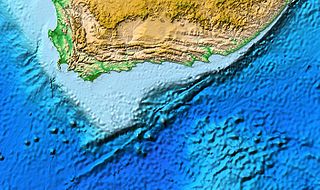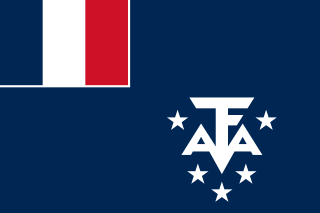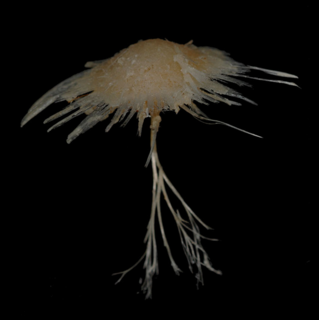
Cladorhiza is a genus of carnivorous sponges, comprising around 40 species found in oceans around the world. Cladorhiza is the type genus of the family Cladorhizidae.
Grantia is a genus of calcareous sponges belonging to the family Grantiidae. Species of the genus Grantia contain spicules and spongin fibers.

Polymastia is a genus of sea sponges containing about 30 species. These are small to large encrusting or dome-shaped sponges with a smooth surface having many teat-shaped projections (papillae). In areas of strong wave action, this genus does not grow the teat structures, but instead grows in a corrugated form.
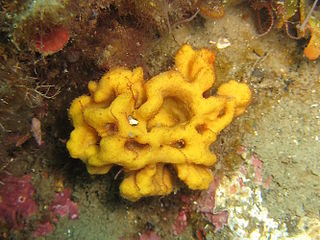
Axinella is a genus of sponges in the family Axinellidae. Species of Axinella occur in the Indian and Pacific Oceans. Most of these sponges are smaller than 20 cm, and have a yellow or orange colour.
Leuconia is a genus of calcareous sponges in the family Baeriidae. It was described by English anatomist and zoologist Robert Edmond Grant in 1933.
Auletta is a genus of sponges in the family Axinellidae.
Homaxinella is a genus of sea sponges in the family Suberitidae. The type species is Homaxinella balfourensis.
Myxilla is a genus of demosponge belonging to the family Myxillidae. These sponges usually form encrustations on rock surfaces.

Niphatidae is a family of demosponges in the order Haplosclerida. It contains the following genera:
Neopetrosia is a genus of marine petrosiid sponges. It was first established by the American spongiologist Max Walker de Laubenfels in 1932. It contains these 27 species:
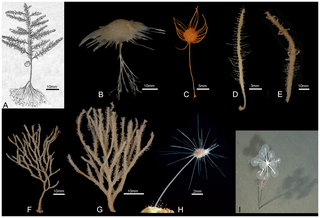
Cladorhizidae is a family of demosponges which are carnivorous and prey on crustaceans and other small animals. They are deep sea sponges typically found on oceanic ridges and seamount systems. As of 2017, nine new species have been discovered in the Southwest Indian Ocean Ridge (SWIOR) including: Abyssocladia boletiphora, Ab. corniculiphora, Ab. hemiradiata, Asbestopluma (Asbestopluma) unguiferata, As. (A.) jamescooki, As. (A.) laminachela, As. (A.) pseudoisochela, As. (A.) ramuscula and Chondrocladia (Meliiderma) rogersi.
Cladorhiza inversa is a species of sponge in the taxonomic class Demospongiae. The body of the sponge consists of a spicule and fibers and is water absorbent.
Dasychalina is a genus of sponges in the family Niphatidae.

Gelliodes is a genus of sponges in the family Niphatidae.
Gelliodes fibrosa is a species of sponge found in shallow water in the Indian Ocean. It was first described in 1905 by the British zoologist Arthur Dendy, the type locality being the Gulf of Mannar, Sri Lanka. In 1925, the American zoologist Edmund Beecher Wilson described a species of sponge from North Sulawesi as Gelliodes fibrosa. In 2013, Carballo, Aquilar-Camacho, Knapp & Bell, decided that this was a homonym, a separate taxon from the original one described by Dendy, and gave the new species the name Gelliodes wilsoni.
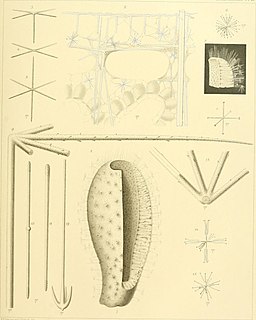
Rossellidae is a family of glass sponges belonging to the order Lyssacinosa.
Esperiopsis is a genus of demosponges, comprising around 30 species found in oceans around the world.
Amphilectus is a genus of demosponges, comprising around 20 species found in oceans around the world.

Staurocalyptus is a genus of sponge. It was circumscribed in 1897 by Isao Ijima.

Geodia megastrella is a species of sponge in the family Geodiidae. It is found in the waters of the North Atlantic Ocean. The species was first described by Henry John Carter in 1876.

